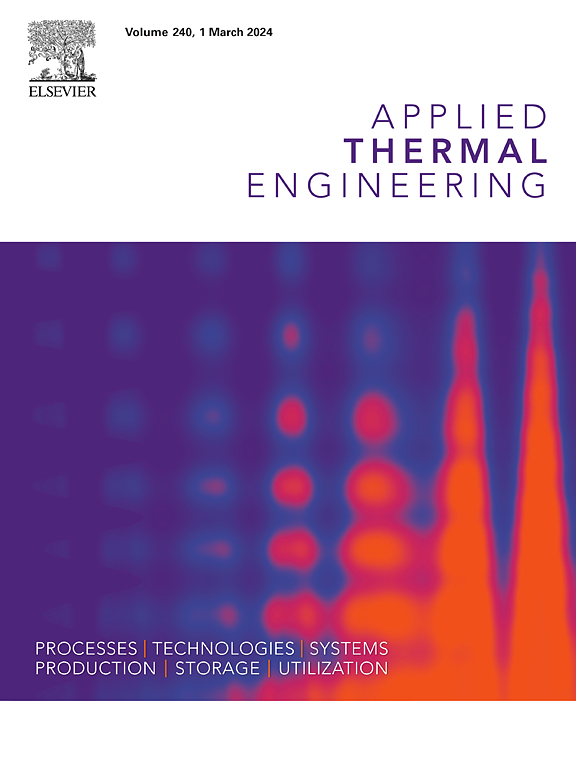Design and performance evaluation of an anti-expansion 3D vapor chamber for multi-chip cooling in high heat flux applications
IF 6.9
2区 工程技术
Q2 ENERGY & FUELS
引用次数: 0
Abstract
Diamond substrate-based liquid cooling effectively addresses the heat dissipation of high-heat-flux multi-chip due to the superior thermal diffusion properties. However, the high cost and limited machinability restrict commercial application of diamond substrate. Vapor chambers, with customizable profiles and lower manufacturing costs, present a promising alternative for efficient multi-chip cooling. This paper introduces an anti-expansion 3D vapor chamber for high-heat-flux multi-chip cooling. The shell and wick structures are optimized based on thermal resistance network analysis to minimize thermal resistance between the heat source and the working fluid. The heat transfer performance of the vapor chamber is evaluated through comprehensive experiments, assessing the impact of processing parameters and service conditions. Results demonstrate that the vapor chamber with a GCBP2 wick delivers optimal thermal performance, achieving a maximum heat dissipation capacity of 339.4 W/cm2 at a 95 °C threshold temperature, observing an improvement of 52.7 W/cm2 over diamond aluminum. Additionally, the GCBP2 vapor chamber maintains stable heat dissipation across various operating positions, with a performance fluctuation of less than 3 %. This vapor chamber not only outperforms diamond aluminum thermally but also reduces costs by 90 %, highlighting the potential for commercial applications in high-heat-flux multi-chip cooling.
用于高热流密度多芯片冷却的抗膨胀3D蒸汽室的设计和性能评估
金刚石基板液体冷却由于其优越的热扩散特性,有效地解决了高热流密度多芯片的散热问题。然而,金刚石基体的高成本和有限的可加工性制约了其商业化应用。蒸汽室具有可定制的外形和较低的制造成本,是高效多芯片冷却的一个有前途的替代方案。介绍了一种用于高热流密度多芯片冷却的防膨胀三维蒸汽室。基于热阻网络分析优化了壳体和灯芯结构,使热源与工作流体之间的热阻最小化。通过综合实验,评估了工艺参数和使用条件对蒸汽室传热性能的影响。结果表明,GCBP2灯芯的蒸汽室具有最佳的热性能,在95℃的阈值温度下达到了339.4 W/cm2的最大散热能力,比金刚石铝提高了52.7 W/cm2。此外,GCBP2蒸汽室在各种工作位置都能保持稳定的散热,性能波动小于3%。这种蒸汽室不仅在热性能上优于金刚石铝,而且成本降低了90%,突出了在高热流密度多芯片冷却方面的商业应用潜力。
本文章由计算机程序翻译,如有差异,请以英文原文为准。
求助全文
约1分钟内获得全文
求助全文
来源期刊

Applied Thermal Engineering
工程技术-工程:机械
CiteScore
11.30
自引率
15.60%
发文量
1474
审稿时长
57 days
期刊介绍:
Applied Thermal Engineering disseminates novel research related to the design, development and demonstration of components, devices, equipment, technologies and systems involving thermal processes for the production, storage, utilization and conservation of energy, with a focus on engineering application.
The journal publishes high-quality and high-impact Original Research Articles, Review Articles, Short Communications and Letters to the Editor on cutting-edge innovations in research, and recent advances or issues of interest to the thermal engineering community.
 求助内容:
求助内容: 应助结果提醒方式:
应助结果提醒方式:


